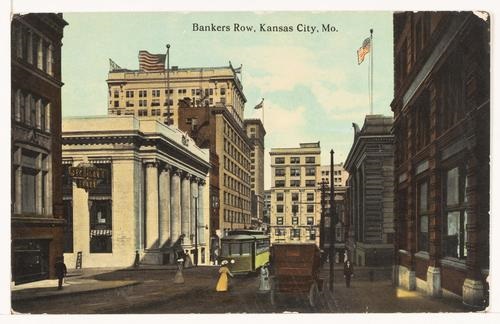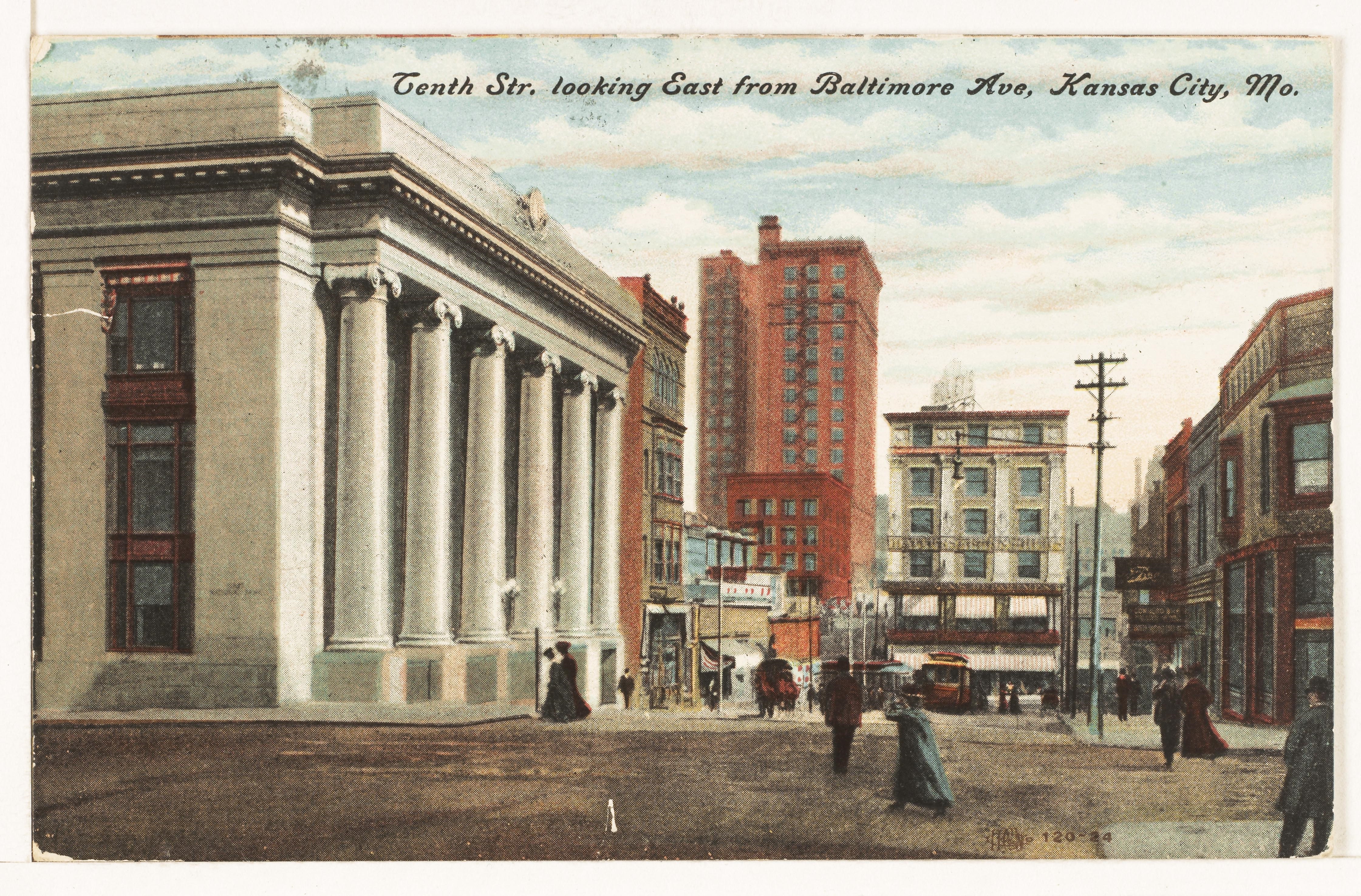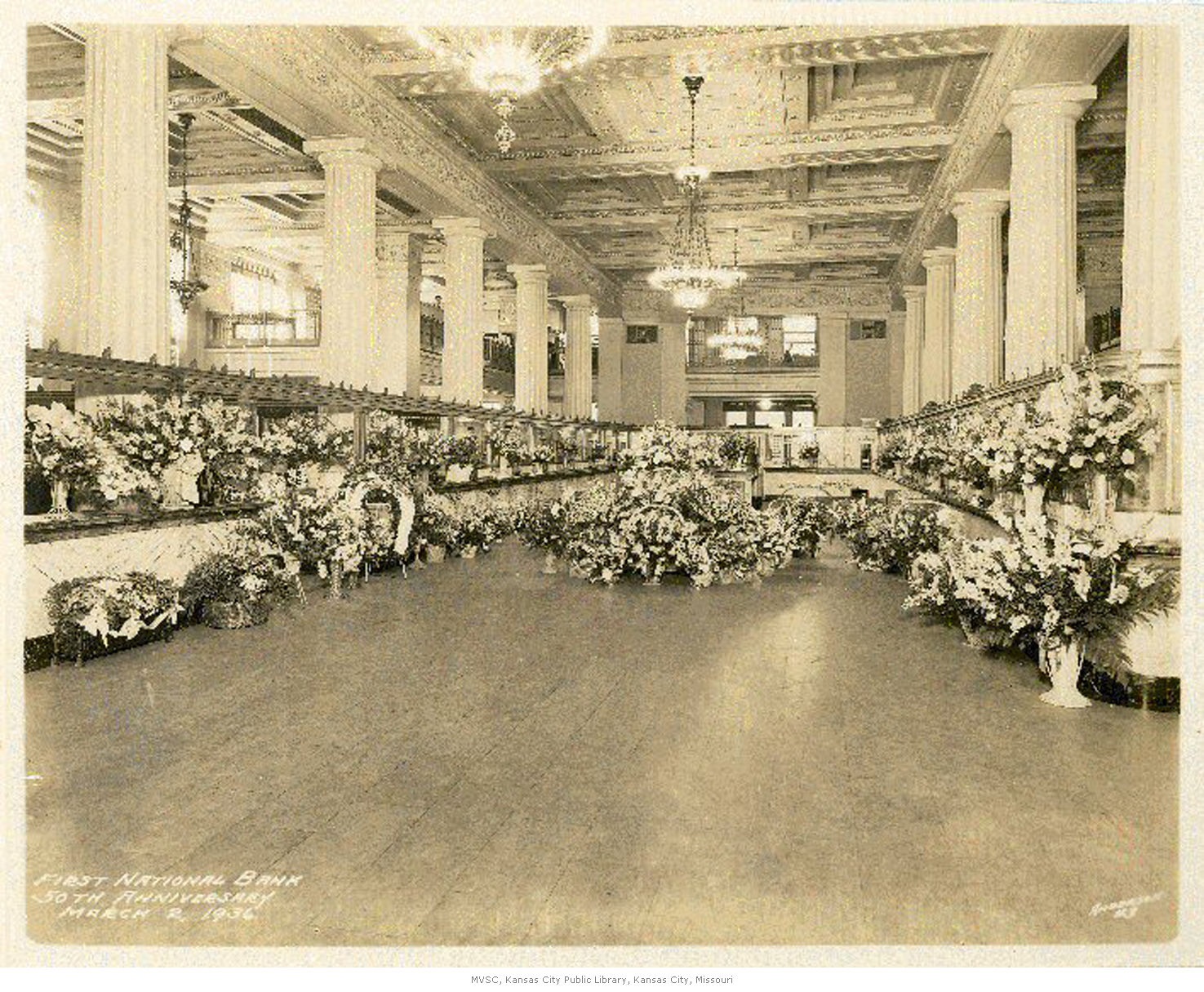Happy Birthday, Central: 20 Years in the Old Bank Building

The grand, six-pillared, bronze-doored building at 10th and Baltimore streets has been home to the Kansas City Public Library’s Central location since April 2004. The structure, established as the First National Bank in 1906, has acted as the cultural nerve center, knowledge source, and bridge over the digital divide for the greater Kansas City community ever since.
Twice, the building has changed the landscape of downtown. First as one of several banks that established “Bankers Row,” helping to transform the Wild West crisscross of dirt roads into a metropolitan downtown.

And many decades later, the building became a cornerstone of revitalization efforts when it was reimagined as the Library, remaking the neighborhood as the Library District.
The white Georgia marble building was designed by Wilder & Wight, which later became Wight & Wight, the designers of the Nelson-Atkins Museum of Art. Total construction cost was $350,000, the land $90,000. The Kansas City Public Library’s first full-time director, Carrie Westlake Whitney – regarded as the mother of the Library – had no reason to imagine the bank building would be home to her Library a century later.
Nonetheless, she wrote about it.
In her 1908 History of Kansas City, Whitney wrote: “In five years the erection of new skyscrapers, bank buildings, theaters, store buildings and other edifices, has changed the appearance of the down-town district. The transformation of Tenth street between Baltimore avenue and Oak street has been especially marked.”

She notes that the area began to shape up in 1906 “when the First National bank began the erection of its elegant new building at the northeast corner of Tenth street and Baltimore avenue. … Tenth street, on which so many handsome buildings have been erected, is narrow and crooked.”
Later in the manuscript, she adds that “The finest exclusive bank building in the West is said to be that of the First National bank at Tenth street and Baltimore avenue.”
The building at 14 W. 10th Street and the others nearby made the area viable for all types of commerce.
For several years, according to Special Collections Senior Librarian Michael Wells, many Kansas Citians had been trying to leave “the city’s frontier past in the history books” – and the banks catalyzed that change.
Leaving the frontier past behind meant shaking the “Cowtown” image and replacing saloons with other types of businesses. In a “What’s Your KCQ” article, Wells wrote that, for a while, the plan worked: “As city limits pushed south away from the river, they welcomed a wave of gentile refinement, especially so in the burgeoning downtown shopping district on 11th Street.”

But then, with the rise of the automobile came the Country Club Plaza in the 1940s, specifically designed to deal with customers arriving in their own vehicles. Similarly, suburban malls attracted people away from the restaurants and retail of downtown.
As merchants left downtown shops – notably Emery, Bird & Thayer in 1968 and Harzfeld’s in 1984 – the bank held on. But it was no longer part of something greater than itself.
After changing hands several times, its final banking occupant, U.S. Bank, closed the doors in 1999.
By that time, Kansas Citians had begun describing the area as a ghost town, “slumbering,” or, worse, an “urban wasteland.”
In a June 1, 1997, article in The Kansas City Star, Scott Cantrell wrote: “Mostly you've got surface parking lots, acres and acres of them, where buildings once stood. After dark, the attractions are limited to a couple of low-rent bars and a massage parlor.”
At the time, the development of the Power & Light district was being hotly debated. What would it look like, what would be included, who would use it, and what would it cost?
But, unlike the changes to downtown that Carrie Westlake Whitney wrote about in the early 1900s, maybe improvements didn’t have to be so much about adding centers of commerce.
Maybe the community needed a new heart.
Those who came together in 2000 to finance the $50.2 million renovation of the old First National Bank building took a gamble. The late Phil Kirk, once chairman of DST Realty, the Hall Family Foundation, and Chairman Emeritus of Commerce Bank Jonathan Kemper would repurpose the bank as the Central location of the Kansas City Public Library.
Within years of the 2004 grand opening, the historic area around the new Central Library – now known as the Library District and listed on the National Register of Historic Places – sprang back to life with the conversion of other pre-World War II buildings into lofts, condos, and apartments and the emergence of restaurants and other businesses.
And so, for the second time, the building changed Kansas City.
To celebrate two decades at 14 W. 10th Street, the public is invited to an all-ages drop-in happy hour from 5:30-7:30 p.m. on April 19, 2024, that includes refreshments, crafts for families, a scavenger hunt with prizes, and dancing to music provided by a quartet from the Kansas City Jazz Orchestra.

